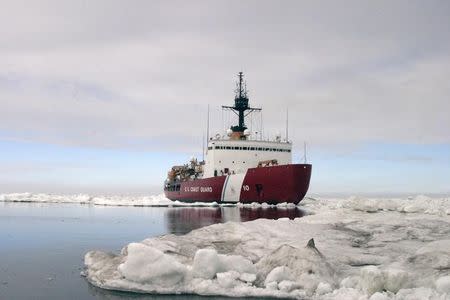U.N. agency sets pollution rules for Polar shipping

LONDON (Reuters) - The United Nations shipping agency on Friday adopted stricter safety and environmental provisions for vessels operating in Arctic and Antarctic waters after years of negotiations. As ice melts, shipping traffic through the regions is set to increase. Under the Polar Code, which was adopted by the International Maritime Organization (IMO), ships trading in the Polar regions will have to comply with strict safety and environmental provisions. These include prohibitions on oil or oily mixtures from any ship into the sea as well as the prevention of pollution from garbage and noxious liquid substances. Friday's move follows the adoption in December of the safety-related requirements of the Polar Code. The complete Polar Code is expected to enter into force in January 2017, the IMO said. The Polar Code will apply to new ships constructed on or after January 1 2017. "Ships constructed before that date will be required to meet the relevant requirements of the Polar Code by the first intermediate or renewal survey, whichever occurs first, after January 1 2018," the IMO said. Campaigners Antarctic and Southern Ocean Coalition (ASOC) said the Polar Code did not go far enough to protect the Antarctic environmment from shipping, adding for instance that the regulations would continue to allow raw sewage to be discharged beyond 12 nautical miles from land. "While some vessels will carry the necessary equipment, the Code does not explicitly spell out what should happen in the event of an oil or chemical spill," Sian Prior of ASOC said. "The inclusion of specific provisions in the Code could have tailored existing requirements to the special needs of polar waters." (Reporting by Jonathan Saul, editing by William Hardy)

